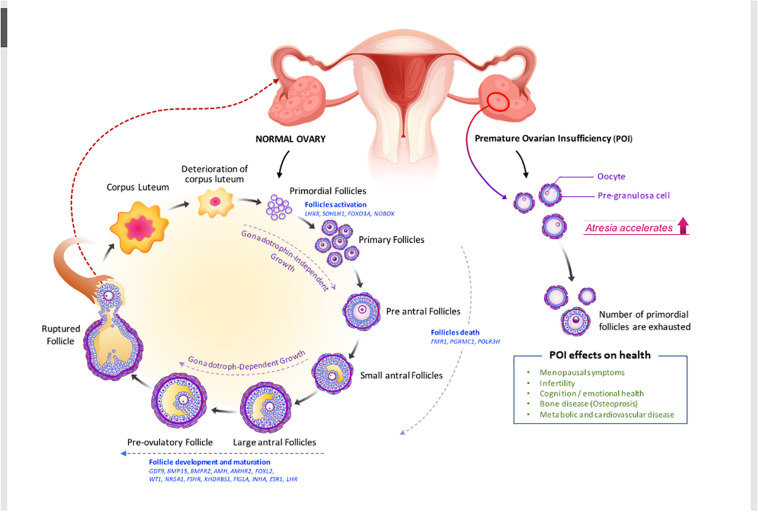FIGURE 1.
Folliculogenesis and ovulation in normal ovary versus POI ovary (impaired folliculogenesis). Under the regulation of intraovarian factors and gonadotropins, primary follicles develop into preantral and early antral follicles, which are the most susceptible to atresia, or follicle death. Then, they become preovulatory follicles, resulting in oocyte release and corpora lutea formation. Defects in folliculogenesis (e.g., decrease in primordial follicles, increase in atresia, and altered follicular maturation) causes POI. Selected genes that are involved in ovarian follicle activation, maturation, and death and the effect of POI on health (see also in Table 2 and section “Clinical view of POI”) are shown. AMHR2, anti-Müllerian hormone receptor 2; BMP15, bone morphogenic protein 15; BMPR2, bone morphogenetic protein receptor 2; FMR1, fragile X mental retardation; FSHR, follicle-stimulating hormone receptor; FOXO3A, forkhead box O3; FOXL2, forkhead box L2; GDF-9, growth differentiation factor 9; KHDRBS1, heteronuclear ribonucleoprotein particle K homology domain RNA binding S1; LHX8, LIM homeobox 8; NOBOX, newborn ovary homeobox; NR5A1, nuclear receptor subfamily 5 group A member 1; PGRMC1, progesterone receptor membrane component 1; POLR3H, RNA polymerase III subunit H; SOHLH1, spermatogenesis and oogenesis specific basic helix–loop–helix 1.

